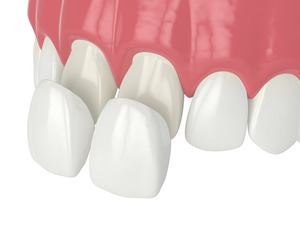4 Side Effects You Might Experience After Getting Veneers
January 10, 2025

Veneers are generally considered a very safe option for making multiple aesthetic corrections to your smile at once. That being said, the process of placing veneers on your teeth can have a few side effects. The good news is that they shouldn’t be anything you can’t manage – especially if you’re prepared for them in advance. Below is a look at 4 possible side effects of veneers and what you can do about them.
1. Tooth Sensitivity
To prepare your teeth for veneers, a thin layer of enamel must be removed. This will make your teeth more sensitive than normal when you consume anything that’s especially hot or cold. It’s recommended that you stay away from such foods and beverages for a while after getting veneers. On top of that, you may also want to think about switching to toothpaste that is designed with unusually sensitive teeth in mind.
Generally, tooth sensitivity will last for about three weeks after getting veneers. But if it persists for months, it could be a sign that there’s something wrong with the tooth. Be sure to let your dentist know right away if tooth sensitivity lasts longer than expected.
2. Gum Inflammation
It’s not unusual for the gums to become slightly inflamed after veneers have been placed. This is because the gum tissues need time to get used to the new restorations. The inflammation should be relatively minor, and you can typically expect it to fade on its own. Until then, you can take ibuprofen or a similar type of over-the-counter medication to manage the issue. Don’t forget to be very gentle around the gumline while you’re brushing your teeth.
3. Increased Risk for Tooth Pulp Injury
While it’s not very common, getting veneers could potentially increase the risk of a pulp injury occurring in the treated teeth. This can be the result of the pulp becoming exposed due to improper enamel removal. It’s important to keep an eye out for potential symptoms of tooth pulp injury, such as discomfort and tooth sensitivity. If you think something is wrong with your pulp, let your dentist know right away.
4. General Discomfort
There’s typically little to no pain to worry about during the veneer process itself. Afterward, you may notice a little bit of discomfort, but it will likely just be the result of keeping your mouth open for so long. Any minor discomfort you experience should be temporary, and you can take an over-the-counter pain reliever to control it if you need to.
The side effects of veneer placement are generally nothing to worry about, but if you still have concerns, don’t hesitate to voice them during your initial consultation with your dentist.
About the Author
Dr. Jed M. Koops earned his Doctor of Dental Medicine at Case Western Reserve University in Cleveland, OH. His Beachwood practice, Orange Place Family Dentistry, utilizes the latest technology and offers a wide range of services, including fully customized veneers for correcting multiple cosmetic dental issues. To schedule a consultation with Dr. Koops, visit his website or call (216) 464-2448.
No Comments
No comments yet.
RSS feed for comments on this post.
Sorry, the comment form is closed at this time.
